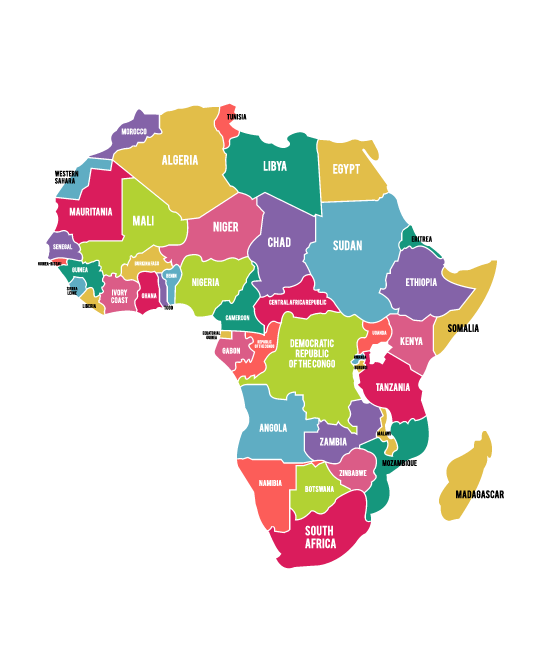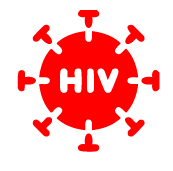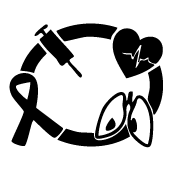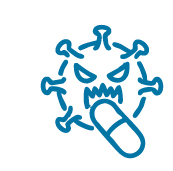

Our Approch
Repurposing medicines offers a promising approach to tackling diseases disproportionately affecting Africa
Repurposing medicines offers a promising approach to tackling diseases disproportionately affecting Africa
![]()
where diseases burdening populations may lack effective treatment options or adequate infrastructure. Here’s an overview of how this approach can be leveraged for diseases relevant to Africa:
01

Malaria
02

Tuberculosis (TB)
03

HIV/AIDS
04

Communicable Diseases like Emerging Infectious Diseases,
05

Non-Communicable Diseases Sickle Cell Disease
06

Antimicrobial Resistance (AMR)
- Malaria
Malaria remains one of the deadliest infectious diseases in Africa, primarily caused by Plasmodium falciparum and transmitted by Anopheles mosquitoes. Drug resistance to current treatments like artemisinin-based combination therapies (ACTs) is a growing concern.
Repurposing opportunities:
Ivermectin, traditionally used for parasitic worm infections (onchocerciasis), has shown potential in reducing malaria transmission. It is also being explored as an adjunct to insecticide-treated bed nets for controlling mosquito populations.
Atovaquone-proguanil: Originally developed for malaria, it has been explored for its potential against other diseases like cryptosporidiosis, which is particularly relevant in immunocompromised populations, including people with HIV/AIDS.
- Tuberculosis (TB)
Africa bears a significant burden of tuberculosis, with high co-infection rates with HIV. Drug-resistant TB, including multi-drug-resistant (MDR) and extensively drug-resistant (XDR) strains, complicates treatment.
Repurposing opportunities:
Bedaquiline: While developed for MDR-TB, research suggests it might also have efficacy against non-TB mycobacterial infections, an emerging concern.
Clofazimine, traditionally used for leprosy, is being explored for use in MDR-TB treatment regimens.
Thioridazine, an antipsychotic, has shown potential in preclinical studies for treating TB and drug-resistant strains.
- HIV/AIDS
Sub-Saharan Africa carries a large share of the global HIV/AIDS burden. While antiretroviral therapy (ART) has made major strides in managing the disease, challenges remain in terms of access, adherence, and drug resistance.
Repurposing opportunities:
Metformin: Originally used to treat type 2 diabetes, has been investigated for its potential to improve immune responses and reduce inflammation in people living with HIV.
Statins: Commonly prescribed for cholesterol, statins have been researched for their potential to enhance immune function and reduce inflammation in HIV-positive individuals.
Anticancer drugs: Drugs like bortezomib and lenalidomide, originally developed for cancer treatment, have shown promise in managing HIV-associated complications, such as Kaposi’s sarcoma.
- Emerging infectious diseases (EIDs) and antimicrobial resistance (AMR) are significant public health challenges in Africa, exacerbated by factors such as rapid urbanization, climate change, population growth, and limited healthcare infrastructure. Here’s an overview of the key issues and trends:
Repurposing opportunities:
Chloroquine and hydroxychloroquine (traditionally used for malaria) were investigated during the 2014 Ebola outbreak for their antiviral properties, although the results were inconclusive.
Favipiravir (an antiviral developed for influenza) has shown promise against Ebola in animal studies and is being studied for other VHFs.
-
Sickle Cell Disease (SCD) is a significant public health issue in Africa, where it is one of the most common genetic disorders. It is a non-communicable disease (NCD) caused by a mutation in the haemoglobin gene, leading to the production of abnormal haemoglobin (HbS). This results in the deformation of red blood cells into a sickle shape, causing chronic anaemia, pain crises, and multi-organ damage. Africa bears the highest burden of SCD globally, with the majority of affected individuals living in sub-Saharan Africa.
Epidemiology of Sickle Cell Disease in Africa
- High Prevalence:
- SCD is most prevalent in regions where malaria is or was endemic, as the sickle cell trait provides some protection against severe malaria.
- Approximately 70% of the global SCD population lives in Africa, with over 300,000 babies born with the disease annually.
- Geographic Distribution:
- The highest prevalence is in West and Central Africa, particularly in countries like Nigeria, the Democratic Republic of Congo, and Ghana.
- In some regions, up to 2% of newborns have SCD, and 20-30% carry the sickle cell trait.
- Mortality:
- Without proper management, up to 50-90% of children with SCD in Africa die before their fifth birthday, often due to infections, anemia, or complications like stroke.
Challenges in Managing Sickle Cell Disease in Africa
- Limited Awareness and Education:
- Many communities lack awareness of SCD, leading to delayed diagnosis and stigmatization of affected individuals.
- Inadequate Healthcare Infrastructure:
- Many African countries lack the resources and facilities to provide comprehensive care for SCD patients, including newborn screening, diagnostics, and treatment.
- High Cost of Care:
- Managing SCD requires lifelong care, including medications, blood transfusions, and hospitalizations, which are often unaffordable for many families.
- Limited Access to Diagnostics:
- Newborn screening programs for SCD are rare in Africa, leading to late diagnosis and missed opportunities for early intervention.
- Infections and Complications:
- SCD patients are highly susceptible to infections like pneumonia and meningitis due to functional asplenia. Limited access to vaccines and antibiotics exacerbates this risk.
- Pain Management:
- Pain crises are a hallmark of SCD, but access to effective pain relief, including opioids, is often limited due to regulatory and logistical barriers.
- Stigma and Discrimination:
- SCD patients often face social stigma, affecting their mental health and quality of life.
Opportunities and Solutions
- Newborn Screening Programs:
- Implementing universal newborn screening for SCD can enable early diagnosis and intervention, significantly improving outcomes.
- Public Awareness Campaigns:
- Educating communities about SCD, its inheritance patterns, and the importance of genetic counseling can reduce stigma and promote early diagnosis.
- Improved Access to Care:
- Strengthening healthcare systems to provide affordable and accessible care for SCD patients, including hydroxyurea therapy, vaccinations, and blood transfusions.
- Research and Innovation:
- Investing in research to better understand the genetic and environmental factors influencing SCD in Africa and developing cost-effective treatments.
- Capacity Building:
- Training healthcare workers to diagnose and manage SCD effectively, including pain management and complication prevention.
- Partnerships and Funding:
- Collaborating with international organizations, governments, and NGOs to secure funding and resources for SCD programs.
- Gene Therapy and Curative Treatments:
- Exploring emerging therapies like gene editing (e.g., CRISPR-Cas9) and bone marrow transplantation, which offer the potential for a cure.
Impact of Sickle Cell Disease on African Societies
- Economic Burden:
- SCD places a significant economic burden on families and healthcare systems due to the high cost of care and lost productivity.
- Social Impact:
- The disease affects education, employment, and social integration, particularly for children and young adults.
- Mental Health:
- Chronic pain and the psychological impact of living with a lifelong condition contribute to mental health challenges among SCD patients.
Conclusion
Sickle Cell Disease is a major public health challenge in Africa, with significant health, social, and economic implications. Addressing the burden of SCD requires a multi-faceted approach, including improved healthcare infrastructure, public education, research, and international collaboration. By prioritizing SCD in national health agendas, African countries can reduce the disease’s impact and improve the quality of life for millions of affected individuals.
- High Prevalence:
- Non-communicable Diseases (NCDs)
The rise of non-communicable diseases (NCDs), including diabetes, hypertension, Sickle Cell Disease and cardiovascular diseases, is an emerging challenge in Africa due to urbanization and lifestyle changes.
Repurposing opportunities:
Aspirin: Long used as an anti-inflammatory and for cardiovascular protection, aspirin is also being tested for its potential role in cancer prevention.
Angiotensin-converting enzyme (ACE) inhibitors: While primarily used for hypertension, ACE inhibitors like lisinopril may also benefit diabetic and hypertensive patients by preventing kidney damage.
- Antimicrobial Resistance (AMR)
The global threat of antimicrobial resistance (AMR) is a growing concern, especially in Africa where overuse and misuse of antibiotics are common. Repurposing existing antibiotics can help combat AMR.
Repurposing opportunities:
Colistin, traditionally used for resistant gram-negative infections, is being investigated for its potential application against multi-drug-resistant (MDR) infections.
Old antibiotics, such as doxycycline and tetracyclines, are being revisited for their effectiveness against a range of resistant pathogens.
Key Advantages of Repurposing Medicines:
Cost-effective: Repositioning existing drugs often involves lower development costs since they have already undergone clinical trials for other indications.
Speed: Repurposed medicines can be fast-tracked through clinical trials, enabling quicker deployment for public health emergencies.
Addressing unmet needs: Many neglected diseases in Africa have few or no effective treatments, and repurposing offers the possibility of filling these gaps.
Infrastructural compatibility: Existing medicines are often already integrated into healthcare systems, making them easier to distribute and administer.
Challenges and Considerations:
Safety and Efficacy: Even when a drug is safe for one condition, it may not be effective or safe for another. Rigorous clinical trials and studies are required to confirm repurposing opportunities.
Intellectual Property: Pharmaceutical patents and market exclusivity can affect the affordability and accessibility of repurposed medicines in low-resource settings.
Regulatory Hurdles: Even for repurposed drugs, approval from health regulatory agencies may require substantial clinical data and longer timelines, complicating rapid deployment.
Conclusion:
Repurposing medicines offers a promising approach to tackling diseases disproportionately affecting Africa, particularly in the context of limited resources and the high burden of infectious and neglected diseases. It holds significant potential to expand treatment options and improve health outcomes, especially when new drugs and treatments are slow to develop.
